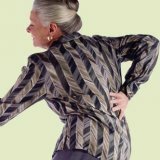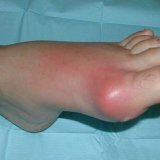Birth trauma of a child: symptoms, consequences, treatment
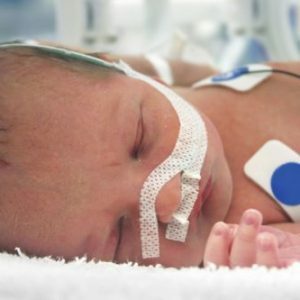
Birth trauma of newborns - this term doctors call various damages to the fetus arising in the process of the generic act.Under such a pathology is understood a violation of the integrity of the tissues or organs of the child, which is due to the mechanical forces acting during the birth. Birth injuries are considered quite common and diagnosed in 8-11% of newborn .This condition is often combined with the mother's birth trauma, which includes vulvar / perineal / vaginal / vaginal tears, vaginal-rectal fistulas, and others.
Birth injuries of newborns, in most cases, have a serious impact on the further mental and physical development of the child.
Classification of birth injuries of newborns
In medicine, the classification of the pathological condition in question depends on the location of the lesion and the predominant function impairment:
- Birth injuries of soft tissue - subcutaneous tissue and skin, muscles, cephalothorem, generic tumor.
- Birth injuries of the osteoarticular system - cracks and fractures of the clavicle / femoral and humerus bones, subluxation of the joints, damage to the bones of the skull, epiphysis of the humerus.
- Birth injuries of internal organs - hemorrhages in the liver, adrenal glands, spleen.
- Birth trauma of the central and peripheral nervous system.This kind of the examined pathological condition is divided into several subspecies:
- intracranial birth trauma - epidural, sudural, subarachnoid, intraventricular hemorrhages;
- birth injury to the spinal cord - hemorrhage in the spinal cord and its membranes;
- birth injury to the peripheral nervous system - damage to the facial nerve, total paralysis, paresis of the diaphragm and others.
Causes of neonatal birth injuries
Analyzing possible causes of neonatal birth injury, it was concluded that three main groups of triggers can be identified:
-
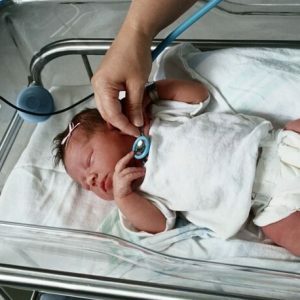 Maternal factors, such as late reproductive age,Endocrine, gynecological and cardiovascular, endured pregnancy, occupational hazards, uterine hypoplasia, narrow pelvis, early reproductive age,estozy.
Maternal factors, such as late reproductive age,Endocrine, gynecological and cardiovascular, endured pregnancy, occupational hazards, uterine hypoplasia, narrow pelvis, early reproductive age,estozy. - Factors directly related to the fetus.This is the most extensive group of causes that lead to the state under consideration.Provoke it can pelvic presentation of the fetus, prematurity, fetal development anomalies, asphyxia, hypochlorism, intrauterine hypoxia.
- Unjustified use of obstetrical benefits.It means conducting a cesarean section, applying obstetrical forceps, turning the fruit on the stem, using a vacuum extractor and others.
In addition, to the onset of a birth injury of a newborn can lead to protracted or, on the contrary, too fast deliveries, excessive strong labor activity, abnormalities of labor, rhodostimulation.Usually, when neonatal birth injuries occur, there is a combination of a number of unfavorable factors that disrupt normal birth biomechanics.
Description, symptoms and treatment
Birth injuries of soft tissues
The most common birth traumatism is manifested by damage to the skin and subcutaneous tissue.Similar birth traumas are revealed at the first visual inspection of a newborn by a neonatologist, they are not considered dangerous and require only local antiseptic treatment and the application of the aseptic dressing .Minor birth injuries of soft tissues disappear as early as 6-7 days of life of the newborn.
Birth Tumor
One of the types of birth injuries of newborns is a generic tumor, for which there will be a characteristic swelling of the soft tissues of the head. The generic tumor has the following characteristic features:
- soft-elastic consistency;
- bluish color in the place of injury.
The onset of the birth cancers is associated with prolonged labor in the headache or the application of obstetric forceps .Of a specific treatment does not require a generic tumor, it disappears on its own after a maximum of 3 days.
Injury of the sternocleidomastoid muscle
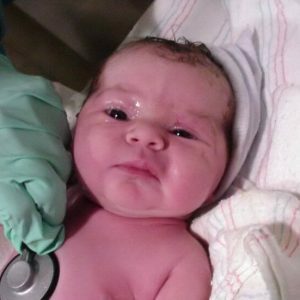 It is considered to be heavier, a small tumor of a moderately dense or testish consistency is defined at the lesion site.Generic injury of the sternocleidomastoid muscle is never detected immediately, usually in a week, when the newborn develops torticollis.
It is considered to be heavier, a small tumor of a moderately dense or testish consistency is defined at the lesion site.Generic injury of the sternocleidomastoid muscle is never detected immediately, usually in a week, when the newborn develops torticollis.
In the treatment of the birth injury of the sternocleidomastoid muscle in newborns, doctors use dry heat, massage, potassium iodide electrophoresis and the corrective position of the head with the help of rollers.If these physiotherapy methods do not give a positive result, the newborn can also undergo a surgical correction.
Kefalogematoma
Characterized by a hemorrhage under the periosteum of the occipital or parietal bones of the skull. Symptoms of this type of birth injury are:
- Elastic consistency of the injured area;
- no ripple;
- painless;
- presence of the roller along the periphery of the hematoma.
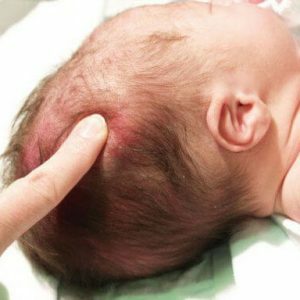 The cefalogematoma decreases in size at week 3 of the child's life, but disappears completely by the end of the 8th week. This type of birth injury can lead to the development of anemia, suppuration or calcification of the cephalohematoma.
The cefalogematoma decreases in size at week 3 of the child's life, but disappears completely by the end of the 8th week. This type of birth injury can lead to the development of anemia, suppuration or calcification of the cephalohematoma.
Note: if a newborn is diagnosed with a large size cephalohematoma( 6 cm or more in diameter), then a radiograph of the skull will be required to exclude bone cracks.
Birth injuries of soft tissues in newborns, as a rule, do not pose a danger and pass without consequences.
Birth injuries of the bony system
Fractures of the clavicle and bones of the limbs
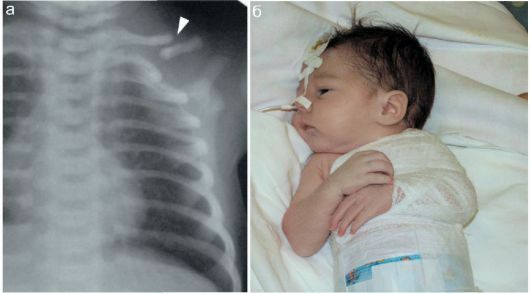
Birth injuries of the bone system are more likely to cause damage to the clavicle and bones of the limbs, and they always occur because of inappropriate midwifery operations during childbirth. If there is a subperiostic fracture of the clavicle without bias, it will be diagnosed only 2-4 days after delivery.But the fracture of the clavicle with displacement is characterized by the impossibility of performing active movements, pain and strong crying of the baby with passive movement of the hand, swelling over the fracture site.
Important! Any types of fractures in newborns require consultation of a child trauma specialist and an X-ray diagnosis.
Treatment of the considered types of birth injuries is as follows:
- with a fracture of the clavicle, a short-term immobilization of the hand is carried out by applying a dezo dressing or dense swaddling;
- with a fracture of the humerus or femur, reposition of the bones of the upper or lower limb and the imposition of a plaster bandage.
Traumatic epiphysis of the humerus
Such birth trauma with pain, swelling and crepitus in the shoulder or elbow joint area, movement in the affected arm will be significantly limited.Treatment of traumatic epiphysis of the humerus is to immobilize the limb( complete immobility), a complex of physiotherapeutic procedures and massage.
Birth injuries of internal organs
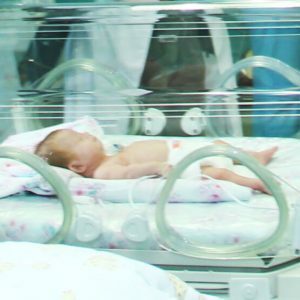 Damage to internal organs occurs due to mechanical effects on the fetus during abnormal childbirth.The most common hemorrhages in the liver, spleen and adrenal glands.
Damage to internal organs occurs due to mechanical effects on the fetus during abnormal childbirth.The most common hemorrhages in the liver, spleen and adrenal glands.
Diagnosis of birth trauma of internal organs in newborns is possible only on 3-5 days, when symptoms of internal bleeding become pronounced.If there is a rupture of the hematoma, abdominal distention occurs, paresis of the intestine develops, muscle hypotension( or atony), suppression of physiological reflexes, arterial hypotension, persistent regurgitation and vomiting.
If a suspected birth injury to internal organs is a newborn, a complete examination is performed, within which ultrasound examination of the abdominal organs, radiography of the abdominal cavity and ultrasound of the adrenals can be prescribed.If the hemorrhage in the birth injury of internal organs occurred in the adrenal glands, the kidney may rapidly develop kidney failure.
Treatment consists of carrying out hemostatic and symptomatic therapy, but if the therapeutic methods fail to produce a positive result, the newborn is shown to undergo laparoscopy or laparotomy, during which the physician performs an internal audit.
The prognosis for birth injury to internal organs in newborns is determined by the volume and severity of the lesion, the timeliness of the lesion.The possibilities of modern medicine and the high level of professionalism of doctors in most cases allow us to make favorable forecasts.
Birth injuries of the central and peripheral nervous system
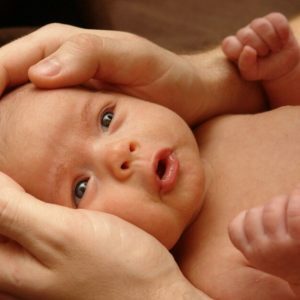 Neural injuries in the neonatal system are the most extensive group of birth injuries.Particular attention should be paid to the birth trauma of the spinal cord.
Neural injuries in the neonatal system are the most extensive group of birth injuries.Particular attention should be paid to the birth trauma of the spinal cord.
Birth injuries of the spinal cord in newborns can include hemorrhage, sprain, compression or rupture of the spinal cord at various levels that are associated with a fracture of the spine.In severe birth injuries of the spinal cord, the neonate will have a pronounced clinical picture of spinal shock - lethargy, hypotension of the muscles, too weak a cry, diaphragmatic breathing, lack of standard reflexes. The most dangerous manifestation of spinal shock in this type of birth injury is respiratory failure, which, in most cases, leads to the death of the newborn.
In more favorable cases, there is a gradual regression of the phenomena of spinal shock:
- on the replacement of hypotension comes spasticity;
- develop vegetative disorders( vasomotor reactions, sweating);
- appears trophic changes in the muscular and bone tissue.
Birth injuries of mild degree in newborns are accompanied by transient neurologic symptoms: changes in muscle tone, reflex and motor reactions.
The doctor will only diagnose the birth trauma of the spinal cord after a full-fledged examination, within which x-rays or MRI of the spine are assigned, electromyography, lumbar puncture .It is mandatory for such a newborn to invite a pediatric neurologist who not only helps in diagnosis and classification, but also prescribes adequate treatment.
Treatment of birth injuries of the spinal cord in newborns includes immobilization of the area of damage, dehydration and anti-hemorrhagic therapy, restorative measures, which include orthopedic massage, exercise therapy, electrostimulation.
Birth injuries of the peripheral nervous system
Similar kind of birth injuries in newborns unites injuries of roots, plexuses of peripheral and cranial nerves. The most common paresis of the brachial plexus( obstetric paresis), which can be the upper( proximal), lower( distal) or total.
The upper Duchenne-Erb paresis is accompanied by a disruption of the proximal function of the upper extremity .In this case, the child assumes a characteristic position with the arm pointed to the trunk, bent at the elbow joint, turned inward in the shoulder, bent in the palm of the hand and the head tilted to the painful shoulder.
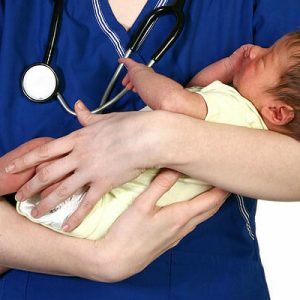 With the lower obstetric paresis of the Dejerine-Klumpke, the functions of the distal arm are impaired. The clinical picture will be characterized by muscular hypotension, hypoesthesia, restriction of movements in the wrist / elbow joints and fingers of the hand, a symptom of the "clawed paw".
With the lower obstetric paresis of the Dejerine-Klumpke, the functions of the distal arm are impaired. The clinical picture will be characterized by muscular hypotension, hypoesthesia, restriction of movements in the wrist / elbow joints and fingers of the hand, a symptom of the "clawed paw".
With the total type of obstetric paresis, the arm is completely inactive, muscle hypotension is pronounced, muscle atrophy develops early.
Diagnosis and localization of the lesion is refined by electromyography.Treatment of the birth trauma of the brachial plexus in newborns is to immobilize the hand with the help of longi, massage, exercise therapy, physiotherapy and drug therapy.
At paresis of the diaphragm in the newborn( the second most common birth injury of the peripheral nervous system) dyspnea develops, paradoxical breathing, cyanosis, bulging of the chest stand on the affected side of the .If the diagnosis of this birth injury was not carried out in time, the newborn rapidly develops a stagnant pneumonia, which leads to the death of the child.The treatment of birth trauma consists in the percutaneous stimulation of the diaphragmatic nerve, and if necessary, the doctors provide the newborn with artificial ventilation to restore adequate independent breathing.
Paresis of the facial nerve is associated with damage to the trunk or branches of the facial nerve. In this case, the child has asymmetry of the face, lagophthalmus, eyeball shift upwards with screaming, asymmetry of the mouth, difficulty in sucking.Often paresis of the facial nerve passes without special treatment, but in some cases heat treatment and medical therapy are conducted.
To more rare types of birth injuries of newborns are injuries of the pharyngeal, median, radial, sciatic, peroneal nerve, lumbosacral plexus.
Prophylaxis of birth injuries of newborns
To predict, predict the probability of birth injury of a newborn is rarely possible even for experienced obstetricians and gynecologists. As the preventive measures, the competent management of pregnancy, the most careful attitude to the child directly in the process of birth, use obstetric devices only in case of emergency is considered.
Birth injuries of newborns can be different in nature and intensity of manifestation, not each of them is a danger for the further development of the child.The probability of birth injuries is very high, much depends on the level of professionalism of gynecologists and midwives.
Tsygankova Yana Aleksandrovna, medical reviewer, therapist of the highest qualification category

